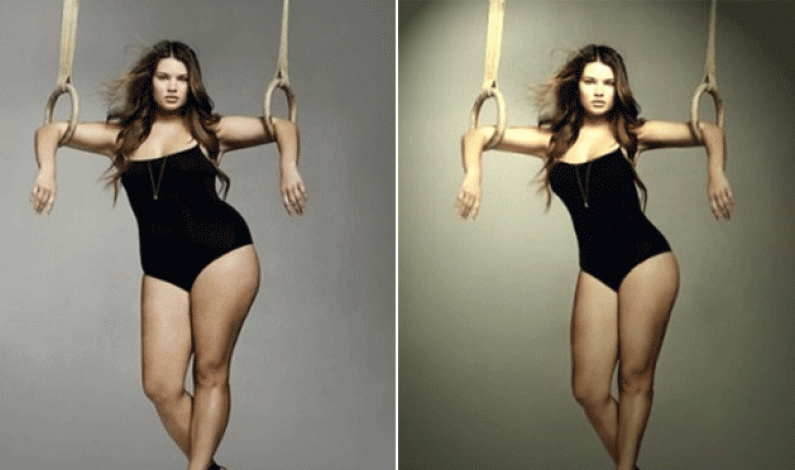Representation
My knowledge of the representation and leadership positions of women in the mainstream media became more apparent while taking this course, the assigned readings and class discussions opened up a door to a whole new world that would have otherwise gone unnoticed if it had not been for this class. Thats not to say that it never crossed my mind to question as to why some women were for the most part half naked and portrayed in a sexual manner in ads, music videos, movies, television shows and videos games as I was growing up, but it never occurred to me to analyze them critically.
 |
| Figure A Grand Theft Auto killing of prostitute |
 |
| Figure B Photoshopped Image of Female Model |
I brought up this example because while reading Making Movies by Bell Hooks the following excerpt stood out to me, "it may not be the intent of the filmmaker to teach audiences anything, but that does not mean that lessons are not learned. it has only been in the last 10 years or so that I began to realize that my students learned more about race,sex and class from movies than from all the theoretical literature I was urging them to read". (30) Although the quote explicitly talks about movies, in my opinion this applies to any medium where a message is being conveyed. With this said the massages that are placed out for the public try to actively or subtlety convey a message and bell hooks in the same reading explains "the fact that some folks may attend films as "resisting spectators" does not really change the reality that most of us, no matter how sophisticated our strategies of critique and intervention, are usually seduced, at last for a time, by the image we see on the screen. They have power over us and we have no power over them" (3) I used video games and the digitally enhanced image as a platform to explain how women are represented and how that carries over to real life wether is intentional or not. In respective to a different medium, I found a a clip on youtube from the movie called Beautiful Girls, in this clip Rossie O'donnell breaks down the representation of women and criticizes the two other male character for fantasizing over something that she says is not real. she basically states that the images that we see in the media are "mockery, sham, and bullshit".
Beautiful Girls
In this short clip we get a glimpse of the observer versus the observed, Rossie O'donnell (Observer) certainly does not conform to these images as she explains to these two men that the women (Observed) we see on these magazines are simply fake, she goes on to mock the big breasts of one of the models and states that they are "silicon city" and that "She [O'donnell] can hang her overcoat over them". Although the objective in this clip was for O'donnell to make her two friends realize that their that what they see on these magazines is fake.
Ownership
 |
| Figure 3 Media Ownership |
In regards to news and media ownership, We have gone from a society where the majority of the mainstream media was owned and controlled by 50 companies to a society where everything is now owned and controlled by 6 companies, and ironically enough the people standing in the highest position of these media conglomerates are white men. Arguably the problem with having only men in higher up positions is that less content about and for women is created, this means that women are excluded and don't get to tell their stories from a woman's perspective. However, despite this huge gender gap of ownership, some women have stepped up and have obtained reputable positions in different media outlets in attempt to shorten the gap, these women include but are not limited to Geraldine Laybourne ex CEO for Oxygen and Paula Kerger CEO for PBS. In the reading Women Make Movies Debra Zimmerman states "I can guarantee you that eighty percent of the people well be talking to are men, not women, and they're the ones who are the gatekeepers, they're the ones who decide whether the film [shows for] two nights or three nights or a week." (265) Although the quote pertains to women who create films, in essence this can apply for women across the board how have to report in positions where they are subordinate to men.
The Empowerment Project
The Empowerment Project was created as a response to the lack of female role models in the media that girls and women of any color and size across the country could look up to. As see in the clip above they interviewed many women with different empowering job tittles and showing that ordinary women can do extraordinary things. The goal with this project was not only to create a video and post on Youtube and Vimeo and hope that it would become a hit, but instead these five women took it a step further and toured across the country to middle schools, high schools, colleges, community centers and any other places that wanted to share the empowering messages of other successful women, the ultimate goal of The Encouragement Project is to encourage girls and women to not be afraid to fail, encourage them to pursue whatever career they desire without limitations and defining themselves and not allowing under any means to allow someone else to define them.
Works Cited
Redding, Judith and Brownworth, A. Victoria. "Debra Zimmerman and Women Make Movies" Print.
Hooks, Bell. "Introduction "Making Movie Magic"" Reel to Real. Print.
No comments:
Post a Comment
Note: Only a member of this blog may post a comment.